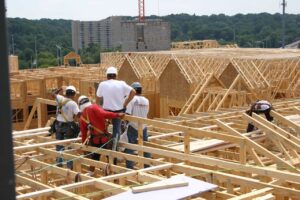 More than 30 years ago, the United Nations General Assembly established World Habitat Day, an important step in acknowledging that everyone deserves a safe place to live. Orlando Home Inspection tells us why our world needs wood.
More than 30 years ago, the United Nations General Assembly established World Habitat Day, an important step in acknowledging that everyone deserves a safe place to live. Orlando Home Inspection tells us why our world needs wood.
However, housing availability in many cities is at a crisis level, where families have to choose between daily essentials and keeping roofs over their heads. Half of U.S. renters are living paycheck to paycheck because they’re spending more than 30 percent of their incomes on housing, according to the 2017 America’s Rental Housing Report – and that’s not just an issue felt in the U.S. but also across North America, Europe, and Asia.
That means less money on other everyday essentials like food, medicine, and transportation.
On Oct. 1, Habitat for Humanity and many other organizations will celebrate World Habitat Day as an opportunity to rededicate themselves to making sure everyone has suitable housing in North America and across the globe. At the American Wood Council (AWC), we’re also taking this time to draw attention to the critical need for a resilient and sustainable built environment, and the building material that can help us build more homes. That material is wood.
Making homes safe and sustainable
By 2050, experts estimate the global population will rise by more than a quarter, increasing the total population to around 9.7 billion people. This puts great pressure on all facets of our ecosystem. It also means it’s increasingly critical to find affordable, safe, carbon-neutral and sustainable alternatives to existing structural materials.
In the U.S. specifically, more than 90 percent of single family homes and 86 percent of multi-family buildings are built using wood framing, according to the U.S. Census Bureau. Developers and architects choose wood because it provides the highest cost savings without compromising on key factors like speed of construction, safety, durability, and environmental impact. Such savings can be passed onto homeowners or renters.
Compared to other building materials, wood also leaves a smaller carbon footprint. When trees are sustainably harvested and manufactured into products, they continue to store carbon and keep it out of the atmosphere. If builders further increased the use of wood for remodeling projects and construction of multi-family structures, studies show the carbon benefit would amount to 21 million metric tons of carbon dioxide a year, equivalent to taking 4.4 million cars off the road indefinitely.
Multi-storey wood-framed buildings also present city leaders with the opportunity to create more urban infill buildings – those that leverage vacant or underused property and revitalize communities. These structures provide an affordable solution that meets code without compromising on cost. And when built to code, those structures can last for generations. Simply put, the savings associated with wood construction can make the difference between having a home and no home at all.
A safe bet
Wood buildings are designed to meet the same rigorous standards that all building materials must meet, as requirements of our nation’s building codes.
Wood is commonly used in areas of high seismic activity, since it’s naturally flexible and can offer a degree of motion that would cause damage to more rigid materials. In fact, wood school buildings are prevalent along the west coast due to Wood’s performance in earthquakes. Wood can also carry greater maximum loads for longer periods of time during high-wind events like hurricanes and have been approved by FEMA to build “safe rooms” for refuge during natural disasters.
Bottom line, our world relies on wood. Without it, we could be facing far worse housing and environmental crises.
In the spirit of World Habitat Day, AWC is helping draw awareness to wood as a building material that delivers durable, safe, cost-efficient structures for our communities. To learn more about the benefits of wood products and how AWC can be a valued resource in ensuring a resilient, safe and sustainable built environment, visit www.awc.org. (BPT)

Call Us Today (352) 429-7062 or Click To Schedule Online 24/7 Right From Our Website

